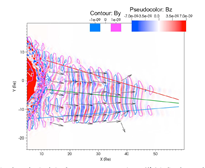
In the space physics community, progress is constantly being made both with new, more detailed spacecraft observations and statistical investigations of spacecraft data, and in parallel, advances within computer simulations continuously give more detailed insights into the physical processes and the time evolution of various phenomena, which enhance our understanding of the important physics. Although both of these disciplines play an important part in the scientific progress, comparative studies between observations and simulation are a key component in order to make sense of both the data and the simulations. Such work, in particular studies which concern kinetic effects, are highly relevant for the work conducted within the SHOCK project. Here below is a selection of four recent papers which together highlight the relevance of simulation-observation comparisons, and the scientific gains that may come from such studies.
Read more